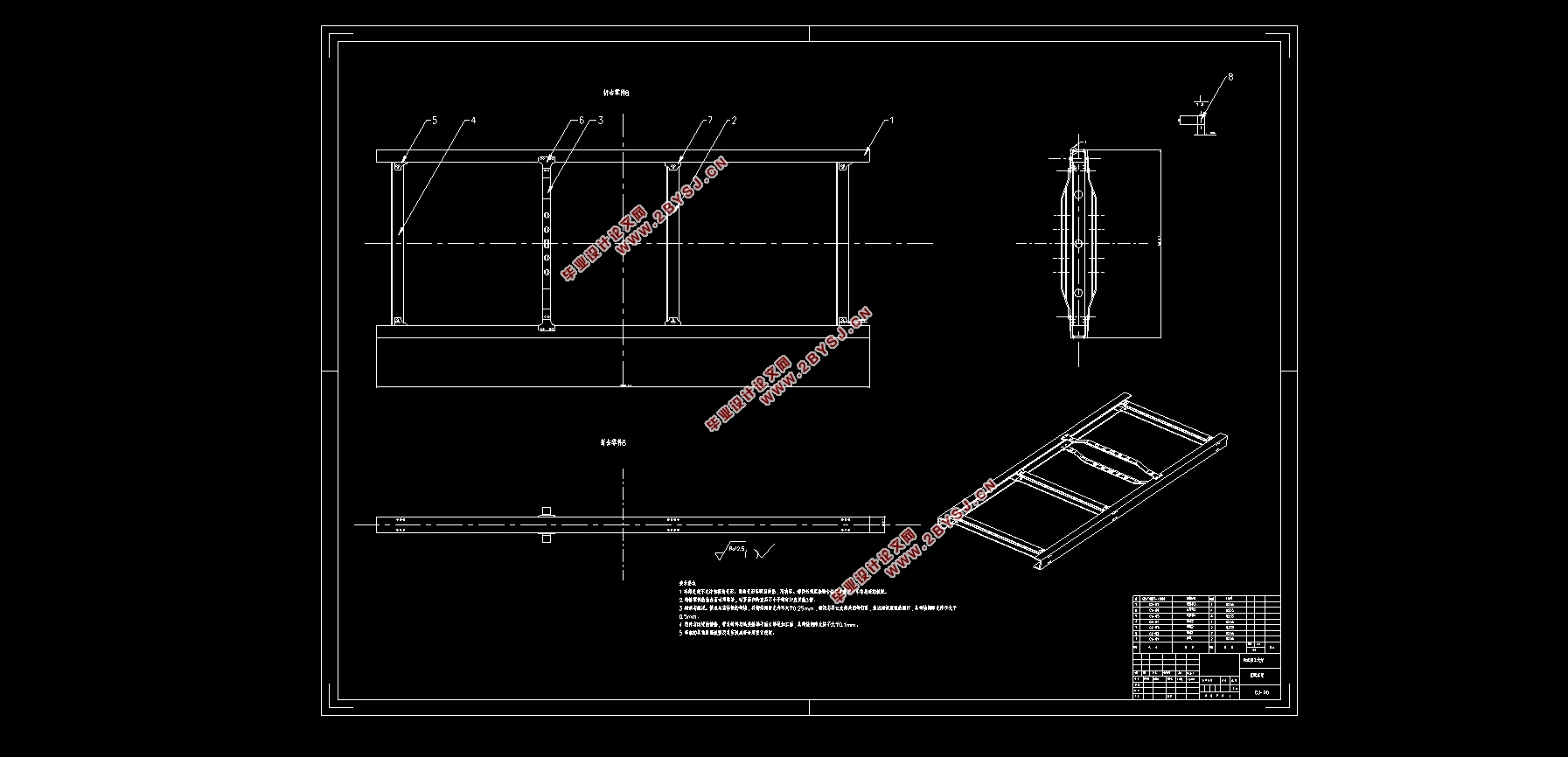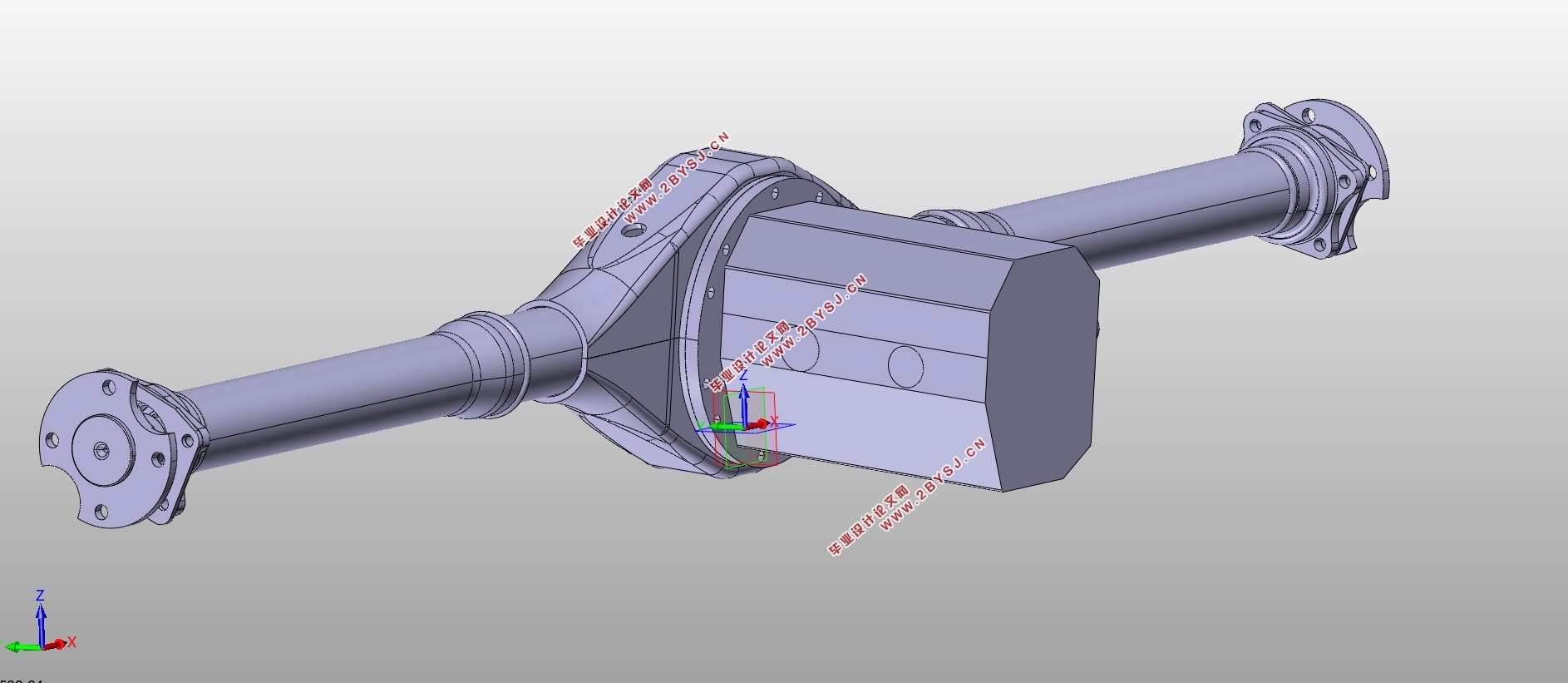纯电动轿车的车架轻量化设计(含CAD零件图装配图)
无需注册登录,支付后按照提示操作即可获取该资料.
纯电动轿车的车架轻量化设计(含CAD零件图装配图)(任务书,开题报告,文献摘要,外文翻译,论文说明书15000字,CAD图7张)
摘要
近十几年来,中国的汽车工业迎来了快速发展的阶段,但与此同时,空气污染、能源危机等问题逐渐凸显出来,制约着我国汽车工业的进一步发展。因此新能源汽车正逐渐成为我国甚至世界各汽车厂商研究的方向,其中电动汽车以其无污染、能源利用率较高的优点成为新能源汽车研究的重点。
目前,由于电动汽车动力电池技术的瓶颈使电动汽车很难满足商业用车续航里程数的要求,这就使得电动汽车难以大规模地替代传统汽车。在动力电池技术难以在短时间内取得突破性进展的情况下,从减轻电动汽车车架的总质量入手,间接提高电动汽车的整车性能和续航里程数是当前推动电动汽车发展的一个重要方向。
本文通过建立车架的有限元模型,对车架进行静力强度分析,根据分析结果判断车架是否满足正常的使用要求,并进一步通过车架的结构优化设计、材料优化设计以及拓扑优化设计,以达到电动汽车车架轻量化设计的目标。车架完成结构优化设计和材料优化设计之后,同样需要对车架进行强度和刚度的分析,根据结果来评定车架是否可以满足正常的使用要求,只有车架通过了强度和刚度的校核才代表着车架轻量化设计的完成。
在本文的研究当中,使用CATIA软件完成电动汽车车架三维模型的建立,之后,采用Abaqus软件完成电动汽车车架有限元模型的建立。在车架网格划分阶段,选择网格类型为修正的二次型四面体单元,并严格地控制网格的疏密程度为18,同时严格控制网格质量以此保证分析的准确性。在Abaqus CAE中,根据车架的实际工作情况施加载荷和设定边界条件,对车架进行有限元分析,确定了车架的总质量为261.3kg,最大位移量为0.7mm,最大应变值为7.2×10-4,最大应力为95.1MPa。完成车架的轻量化设计之后,车架在最大变形量仅仅增加2.1mm的情况下,整个车架的重量下降了58.9%,实现了设计初衷,优化效果明显。
关键词:电动汽车;轻量化;车架
Abstract
In the past decade or so, China's automobile industry has ushered in a stage of rapid development;Meanwhile, problems such as air pollution and energy crisis have gradually emerged, restricting the further development of China's automobile industry. Therefore, new energy vehicles are gradually becoming the research area of automobile manufacturers in China and even the world. Among them, electric vehicles have become the focus of research on new energy vehicles because of their advantages of no pollution and high energy utilization.
At present, due to the bottleneck of electric vehicle power battery technology, it is difficult for electric vehicles to meet the requirements of commercial vehicle mileage, which makes it difficult for electric vehicles to replace traditional vehicles on a large scale. In the case that it is difficult for power battery technology to make breakthrough progress in a short period of time, starting from reducing the total mass of electric vehicle frames, indirectly improving the overall vehicle performance and cruising mileage of electric vehicles is an important direction to promote the development of electric vehicles.
In this paper, the finite element model of the frame is established, and then the static strength of the frame is analyzed, to make sure that the frame satisfies the normal use condition according to the analysis result; Further the goal of lightweight design of the frame of the electric vehicle is realized the through the structural optimization design, material optimization design and topology optimization. After the structural optimization design and material optimization design of the frame, the strength and rigidity of the frame are also analyzed to make sure that the frame meets the requirement of strength and stiffness. The lightweight design of the frame is completed.
In this paper, the CATIA software is used to complete the establishment of the three-dimensional model of the electric vehicle frame, and then the finite element model of the electric vehicle frame is completed in the Abaqus software. In the frame meshing stage, the quadratic tetrahedral mesh with the modified mesh type is selected and the density of the mesh is strictly controlled to be 18, and the mesh quality is strictly controlled to ensure the accuracy of the analysis. In Abaqus CAE, the load and boundary conditions are applied according to the actual working condition of the frame. The finite element analysis of the frame is carried out to determine that the total mass of the frame is 261.3kg, the maximum displacement is 0.7mm, and the maximum strain value is 7.6×10-4. The maximum stress is 95.1 MPa. After the lightweight design of the frame is completed, the weight of the entire frame decreases by 58.9% when the maximum displacement is only increased by 2.1 mm, which achieves the original design and the optimization effect is obvious.
Keywords: Electric car; lightweight; frame
课题研究的主要内容
在车架的设计过程中,应该首先考虑车架的布置要求,并且应该保证车架具有足够的弯曲刚度和拉伸强度,以确保车辆能够适应在行驶过程中遇到的各种路面情况。除此之外车架应具有足够的强度以满足车架的使用寿命要求。
在满足车架的强度和刚度的前提下,对车架进行结构优化和材料优化两方面的轻量化设计,达到减轻整车质量的目标,进而提高电动汽车的综合性能,间接地增加电动汽车的续航里程数,推动电动汽车产业的进一步发展。



目录
第一章绪论 1
1.1电动汽车以及其使用优势 1
1.2国内外电动汽车车架研究情况 2
1.3课题研究的内容和意义 2
1.3.1课题研究的技术路线 2
1.3.2课题研究的目的和意义 3
1.3.3课题研究的主要内容 4
1.4本章小结 4
第二章电动汽车车架的优化策略 5
2.1有限元分析法的理论基础 5
2.1.1有限元分析法的理论基础及其应用范围 5
2.1.2有限元分析的四个阶段 5
2.2有限元的力学基础 6
2.3基于Abaqus对电动汽车车架优化的步骤 7
2.4本章小结 8
第三章电动汽车车架的应力和应变分析 9
3.1电动汽车车架有限元模型的建立 9
3.1.1焊接车架与铆接车架的对比分析 9
3.1.2电动汽车车架CAD三维模型的建立 9
3.1.3电动汽车车架有限元模型的建立 10
3.2电动汽车车架的静力结构分析 10
3.2.1电动汽车车架静力结构分析 11
3.3本章总结 14
第四章电动汽车车架的优化分析 15
4.1结构优化分析 15
4.2材料优化分析 18
4.3拓扑优化 20
4.3.1拓扑优化技术 20
4.3.2车架横梁的拓扑优化 20
4.4本章小结 22
第五章总结与展望 24
5.1总结 24
5.2展望 24
参考文献 25
致谢 27
